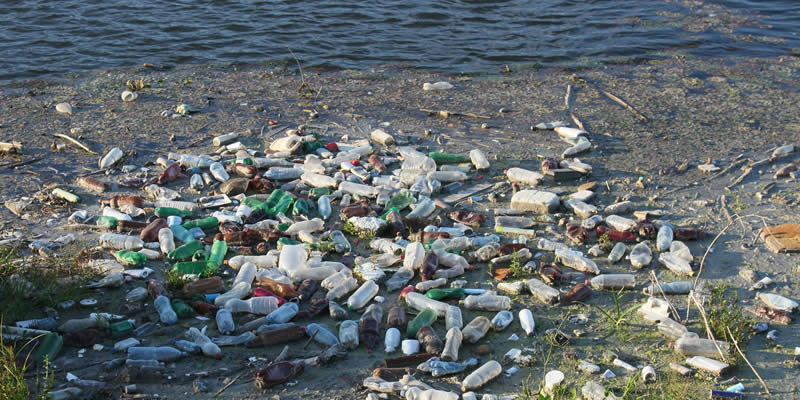Stop Being Plastic

World Earth Day was on 22 April. This year the world aims to “End Plastic Pollution” and also create a global support to stop the use of single-use plastic. Plastic is now deeply integrated into our lives. Sadly, most of the plastic ends in the world’s oceans. This results in killing many marine animals and heavily disturbing marine and terrestrial biodiversity.
According to the Earth Policy Institute, nearly one trillion plastic bags are used worldwide every year.
8.3 million metric tons of plastic are produced each year and only 9 percent are recycled, a 2017 study revealed that 79 percent of all plastic ends up in the landfills or floats around in our oceans.
Humanity’s plastic footprint is probably more dangerous than its carbon footprint.
— Captain Charles Moore in 1997
The recent news are telling us that we should work together with much great effort to stop the pollution.
Greenpeace Philippines made a replica of a dead whale to make people aware of the situation what is going on around the earth. Though it is a replica, the image of the dead whale devastated me the most. The whale is full of plastic, polyethylene, bottles, food wrappers, bags, etc. in its mouth.
But the saddest part is that the replica was inspired by the real 38-foot juvenile sperm whale that died after ingesting plastic, fish nets, hooks, ropes as a result of plastic pollution in Samal Island in Davao del Norte. Through this act, Greenpeace hopes to make people see what we are causing by not reusing or recycling plastics.
Not only cetaceans are affected by plastic pollution, but also birds, other sea mammals and turtles. The Whale and Dolphin Conservation Society (WDCS) says that an estimated one million birds and 100,000 sea mammals and turtles die as a result of plastic pollution every year [1]. The WDCS estimates that there are up to 13,000 pieces of plastic litter per square kilometer of the world’s oceans.
Plastic particles have the ability to go far and far away and by doing so they spread everywhere in our seas and oceans. This does not only kill marine animals, but also introduces plastic into our food chain through seafood.
The video of swimming in the garbage made by a British diver at a dive site called Manta Point is too shocking for me. The video shows the condition of the sea that is only 20 km away from the holiday island Bali. It’s in Indonesia and it’s in the Southern hemisphere.
You can see the video uploaded by the Guardian News below.
Also this gruesome video reveals the scale of plastic pollution. This shows much greater disaster. Even though Norway has the best waste management system than any other countries in the world, their sea is heavily polluted by plastic. Norway, a country far in the Northern hemisphere.
Obviously, this does not make the difference. Despite having the best waste recycling or management system, Norway couldn’t protect its seas. This proves that – plastic pollution is spreading in every single area of the world. Oceans have no state boundaries and it’s becoming a huge headache for all of us. Now is the time to take action. We can’t delay this anymore! The issue also needs co-management and participatory management of all stakeholders throughout the world.
Many countries and scientists are rethinking policies and ways to reduce plastic pollution.
- A significant discovery was made in Ghana. They are using plastic bags to make roads. Their objectives include recycling about 70 percent of plastic waste generated by the country every day into useful products that can be used for a lifetime. This also created a greater opportunity of employment for people in Ghana.
- A New enzyme has been developed by scientists and researchers in U.S. Department of Energy’s National Renewable Energy Laboratory (NREL) and the United Kingdom’s University of Portsmouth. The enzyme can eat polyethylene terephthalate or PET [2]. Scientists are closer to solving the problem of plastics that take many years to biodegrade. A further research led them to discover that – this enzyme works better with polyethylene furandicarboxylate (PEF) rather than PET.
- In Maharashtra, India, the government is trying to build 10,000 km of roads using 50,000 tons of plastic waste in the next six years. Mainly the use of plastics in asphalt reduces the use of bitumen and it is also eco-friendly. Many materials like carry bags, cups, foam material or even laminated plastic, black bin liners or PVC can also be used in the construction. There also have a better longevity, water resistance, and the roads require less maintenance.
- Many countries have taken the step to ban plastic bags. More than 15 countries in Africa either banned plastic bags or put taxes on them. China the highest plastic producing country placed a ban on all thin plastic bags and began requiring retailers to charge a tax on thicker bags. Europe has been very active regarding the solution of plastic pollution.
Plastic is harmful to all living creatures and also to the environment where we live. We need to end the plastic pollution that is increasing day by day, otherwise the marine environment as well as the terrestrial environment are in a very high risk.
[2] https://goo.gl/HJN3B2
This is a guest post written by Jerin Sultana.

Jerin Sultana is currently pursuing her B.Sc Hons in Environmental Science at Chittagong University in Bangladesh. Jerin loves to read books and watch movies. You can follow her on twitter (@JSDipty30) or check her blog about the environment.

